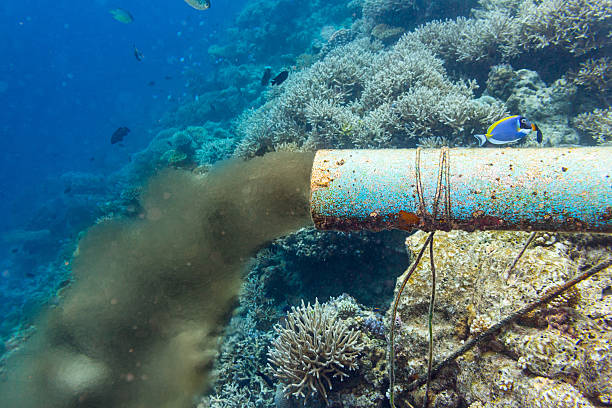Methanol

Parameter Type: Drinking Water Testing for Volatiles
Parameter Name: Methanol
What it is and Where it Comes From:
Methanol, also known as methyl alcohol, amongst other names, is a chemical and the simplest alcohol, with the formula CH3OH (a methyl group linked to a hydroxyl group, often abbreviated MeOH). It is a light, volatile, colorless, flammable liquid with a distinctive alcoholic odor similar to that of ethanol (potable alcohol). A polar solvent, methanol acquired the name wood alcohol because it was once produced chiefly by the destructive distillation of wood. Today, methanol is mainly produced industrially by hydrogenation of carbon monoxide. Methanol consists of a methyl group linked to a polar hydroxyl group. With more than 20 million tons produced annually, it is used as a precursor to other commodity chemicals, including formaldehyde, acetic acid, methyl tert-butyl ether, methyl benzoate, anisole, peroxyacids, as well as a host of more specialised chemicals. Drinking water testing gives you several benefits like peace of mind, identifying contaminants in your water, and insight into health concerns. Safe Home offers Laboratory drinking water testing kits for Methanol, allowing you to collect your water sample and ship it directly to our EPA-Certified Laboratory. This platform of drinking water testing for Methanol will give you an accurate level based on the lowest level of a parameter our instruments can detect (Method Detection Level). Safe Home drinking water testing for volatiles can be used for city and well water supplies. Drinking water testing should be done any time you notice a significant change in your water quality.
Health Effects:
Acute (short-term) or chronic (long-term) exposure of humans to methanol by ingestion may result in blurred vision, headache, dizziness, and nausea. No information is available on the reproductive, developmental, or carcinogenic effects of methanol in humans. Birth defects have been observed in the offspring of rats and mice exposed to methanol. These included skeletal, cardiovascular, urinary system, and central nervous system (CNS) malformations in rats and increased resorptions and skeletal and CNS malformations in mice.
Solutions to Contaminant Levels:
What are the next steps after drinking water testing? A filter with granular activated carbon (GAC) is a proven option to remove certain chemicals, particularly organic chemicals, from water. GAC filters can be used to remove chemicals that give objectionable odors or tastes to water such as hydrogen sulfide (rotten eggs odor) or chlorine. Reverse osmosis is a process that removes foreign contaminants, solid substances, large molecules, and minerals from water by using pressure to push it through specialized membranes. Here’s how reverse osmosis works. Unlike osmosis, which is a passive process, reverse osmosis requires external force (pressure) to work. Pressure is applied to a highly concentrated solute solution, such as salt water, to pass through a membrane to a lower concentrate solution. The membrane allows water to flow through but blocks out larger molecules, like contaminants. The reverse osmosis process leaves higher concentrations of solute on one side and only the solvent, or freshwater, on the other. Who do I need to contact to find out more information about water quality in my area? Every community water supplier must provide an annual report to its customers, known as a Consumer Confidence Report (CCR). The report provides information on your local drinking water quality, including the water’s source, contaminants found in the water, and how consumers can get involved in protecting drinking water. How often does the local public water system preform drinking water testing? Frequency of drinking water testing depends on the number of people served, the type of water source, and types of contaminants. Certain contaminants are tested more frequently than others, as established by the Safe Drinking Water Act. You can find out about levels of regulated contaminants in your treated water for the previous calendar year in your annual Consumer Confidence Report (CCR).
File Under: Volatiles
Drinking Water Testing - Parameter Types
Important Terms
-
MCL’s (Maximum Contaminant Levels) MCL’s are levels that set by the USEPA and are enforceable to Public Water Utilities, requiring additional treatment, when the levels are exceeded. These same guidelines should be at least considered, by owners of private wells. Some states have more strict guidelines than the USEPA. Not all parameters have MCL’s. If the parameter has an MCL, it’s listed.
-
MCLG’s (Maximum Contaminant Level Goals) MCLG’s are goals set by the USEPA that we should all strive for when consuming drinking water from any water supply. Concentrations of certain parameters (even below the MCL’s), are still not healthy for humans and animals to drink. These same guidelines should at least be be considered, by owners of private wells. Some states have more strict guidelines than the USEPA. Not all parameters have MCLG’s. If the parameter has an MCLG, it’s listed.
-
ACTION LEVELS ACTION LEVELS are a specified concentration of a respective parameter in drinking water, that is above a “treatment level” set by the USEPA. When these levels are exceeded, further treatment and monitoring is required by the respective utility who’s water violated this limit.Action Levels apply to parameter-rules such as but not limited to the Copper/Lead Rule.
-
PARTS PER MILLION (ppm) PPM is a scientific measurement which represents milligrams of the parameter being tested per liter of the respective liquid. Example: If Copper in your water supply is at a concentration of 1.00 mg/L, this is the same as saying the concentration is 1.00 ppm.


